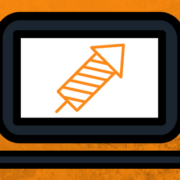Determining a Site’s Webspace Requirements
To be published, a website must have Web Hosting, which is storage space rented on a provider’s server. Many things determine a website’s success, but load times and bandwidth are two of the most important considerations. The site’s content determines how much space is necessary, and the site owner should follow certain steps when buying web hosting space.
Bandwidth and Disk Space
Although these terms are confusing to some, it’s easier to understand them with a little explanation. Disk space is the amount of physical storage required for a website. It comes on shared, dedicated, and virtual private servers to suit the needs of any business owner. Bandwidth is a measurement of the amount of data transferred at one time, and it is attributed to the user rather than the site itself.
Disk Space Calculations
All of a site’s data is stored on the system’s hard drive if the owner is building a site on the Windows OS. However, when the owner buys webspace, they need to estimate how much disk space the site will occupy. Before making that determination, the site owner should answer the following questions.
- What category does the site fall into?
- How big is the webpage?
- What are the site owner’s future plans for the site?
- How many individual pages will be used?
Site Category

- Simple sites have static content, text files, and HTML. They do not require a significant amount of webspace.
- Sites with dynamic content have image, audio, and video files as well as scripts. They may require a bit more webspace.
- Personal blogs sometimes have video and image files, so storage requirements can vary.
- E-commerce websites are a way to exchange information with consumers. As such, they require a high amount of storage for high-resolution image files.
- Music/video websites are a genre that requires a high amount of webspace.
Determining a Site’s Storage Needs
When designing a website, it’s a good idea to have a rough estimate of its size. The owner should know what’s going on the website, such as images, text, or a combination of the two. Page structure is an important consideration, and the site owner should decide on an overall look and feel before the design phase starts. By following these steps, the owner can determine their webspace needs.
File Types and Hosting Plans
Basic static sites and personal blogs may contain simple text files, and the page size would be small. However, if image files are to be included, it’s important to know their quality. It takes more webspace to host high-quality images than it does to host low-resolution files.
Plans for Future Growth
Today’s website may be a static one with minimal space requirements, but things change and companies grow. When businesses expand, the corporate website’s scope increases. While estimating webspace requirements, the site owner should think of future scaling. In many cases, multiplying the site’s current size by a factor of four or five can provide a fair estimate of a site’s future requirements.
Factors Determining Storage Space Requirements
Two primary factors affect clients’ webspace requirements. Email accounts can greatly increase a site’s storage requirements, particularly if they receive a significant amount of spam. Database connectivity can greatly increase the site’s storage usage, and owners should consider these factors when purchasing a hosting package.
Unlimited Isn’t Always What it Claims to Be
Many web hosting companies offer unlimited disk space, but it’s up to the consumer to know what they need. While some sites may need unlimited storage, smaller sites could find better ways to use those resources. As mentioned earlier, the site owner should measure the size of the page before buying a hosting plan.
Focus on the User to Determine Storage Needs
Web development and design are largely based on the needs of those using the technology. Users are the most important stakeholders for business websites, and those that are hosted and developed according to users’ needs are typically more successful. When deciding on a web hosting package, many aspects must be considered, but bandwidth and data space requirements are certainly important factors.
Leave Room for Growth

- Layout changes can increase a page’s size
- Traffic growth can make a site consume more bandwidth
- Adding more pages can increase page views, particularly those from the search engines’ spiders. If a site owner adds more domains, it’s typically easier to do so under an existing account than with a new one.
- Spikes in traffic, such as those caused by viral social media posts, can cause a site’s bandwidth usage to double or triple in a month or less.
Though a site may only use a percentage of its allotment, the site owner can save themselves from hefty overage fees by planning ahead. Extra bandwidth is relatively inexpensive when it’s built into a hosting plan, and it’s well worth the additional investment. By buying some extra bandwidth, a site owner can not only future-proof their hosting plan, they can get the reassurance of knowing they’re ready for the unexpected.






